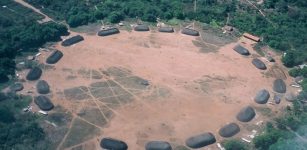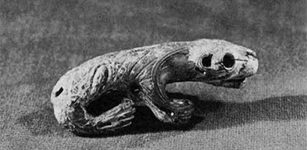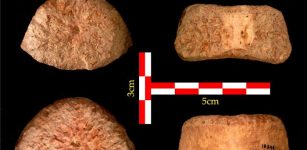Cooking, Roasting And Eating Of Root Plants Is 120,000-Year-Old Habit
Conny Waters - AncientPages.com - Long before farming appeared, humans were cooking, roasting and eating plant roots and this habit is 120,000 years old, according a new study.
A team of archaeologists from South African and British universities discovered charred food remains from hearths in the Klasies River Caves in the Eastern Cape province of South Africa.
The remnants believed to be from the Mesolithic era, are the oldest evidence showing that ancient humans cooked and ate plant stems and roots.
“This is very exciting. The genetic and biological evidence previously suggested that early humans would have been eating starches, but this research had not been done before,” lead author Cynthia Larbey of the Department of Archaeology at the University of Cambridge, said.
The work is part of a systemic multidisciplinary investigation into the role that plants and fire played in the lives of Middle Stone Age communities.
The interdisciplinary team searched for and analysed undisturbed hearths at the Klasies River archaeological site.
“Our results showed that these small ashy hearths were used for cooking food and starchy roots and tubers were clearly part of their diet, from the earliest levels at around 120,000 years ago through to 65,000 years ago,” says Larbey. “Despite changes in hunting strategies and stone tool technologies, they were still cooking roots and tubers.”
Professor Sarah Wurz from the School of Geography, Archaeology and Environmental Studies at the University of the Witwatersrand in Johannesburg, South Africa (Wits University) and principal investigator of the site says the research shows that “early human beings followed a balanced diet and that they were ecological geniuses, able to exploit their environments intelligently for suitable foods and perhaps medicines”.
By combining cooked roots and tubers as a staple with protein and fats from shellfish, fish, small and large fauna, these communities were able to optimally adapt to their environment, indicating great ecological intelligence as early as 120 000 years ago.
“Evidence from Klasies River, where several human skull fragments and two maxillary fragments dating 120 000 years ago occur, show that humans living in that time period looked like modern humans of today. However, they were somewhat more robust,” says Wurz, in a press release.
Klasies River is a very famous early human occupation site on the Cape coast of South Africa excavated by Wurz, who, along with Susan Mentzer of the Senckenberg Institute and Eberhard Karls Universitӓt Tübingen, investigated the small (c. 30cm in diameter) hearths.
Written by Conny Waters - AncientPages.com Staff Writer






















